
Newbury is a town in Essex County, Massachusetts, USA. The population was 6,716 at the 2020 census. Newbury includes the villages of Old Town, Plum Island and Byfield. Each village is a precinct with its own voting district, various town offices, and business center.
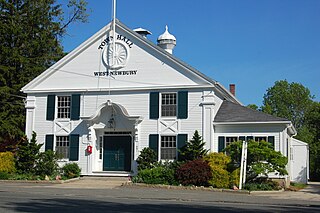
West Newbury is a town in Essex County, Massachusetts, United States. Situated on the Merrimack River, its population was 4,500 at the 2020 census.

The Colonel John Ashley House is a historic house museum at 117 Cooper Hill Road in Sheffield, Massachusetts. Built in 1735 by a prominent local leader, it is one of the oldest houses in southern Berkshire County. The museum is owned and operated by The Trustees of Reservations, and is listed on the National Register of Historic Places.

The Nathan Wood House is a historic house located in Westminster, Massachusetts. Built in 1756 by one of the town's early settlers, it is one of its oldest surviving buildings, and good example of colonial Georgian residential architecture. It was listed on the National Register of Historic Places on September 16, 1987.

The Christopher Carpenter House is a historic house at 60 Carpenter Street in Rehoboth, Massachusetts. Built about 1800, it is a particularly fine local example of Federal period architecture. It was listed on the National Register of Historic Places in 1983.

The Joshua Lewis House is a historic house in Needham, Massachusetts. Built in 1776, it has a well-preserved example of late Georgian architecture, which has been home to a number of individuals of local and national importance, including artist N.C. Wyeth. It was listed on the National Register of Historic Places in 1982.

The Saunders–Paine House is a historic house at 260 Paine Hollow Road in Wellfleet, Massachusetts. This 1+1⁄2-story Federal style Cape was built c. 1830, and is a well-preserved local example of the style. The first known owner was Charles Saunders who married Mary Cole Paine, whose family gave the area its name. The house was listed on the National Register of Historic Places in 1998.
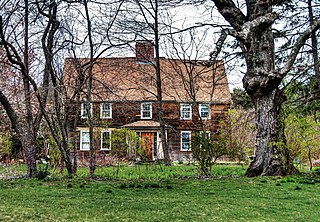
The Abraham Adams House is a historic First Period house in Newbury, Massachusetts. Its oldest portion dates to between 1705 and 1707, and its interior retains a number of First and Second Period colonial features. It was listed on the National Register of Historic Places in 1990.

The Purchase-Ferre House is a historic house at 1289 Main Street in Agawam, Massachusetts. Built in 1764, it is one of a small number of surviving 18th-century houses in the town. It has been in the hands of the Ferre family since 1799, and is little-altered since then. The house was listed on the National Register of Historic Places in 1990.

Newell Farm is a historic farmhouse at 243 Main Street in West Newbury, Massachusetts.
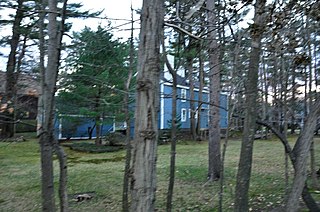
The Batchelder House is a historic house at 607 Pearl Street in Reading, Massachusetts. Built about 1783, it is a good local example of Federal period architecture. It is also significant for its association with the locally prominent Batchelder family, and as an early shoemaking site. The house was listed on the National Register of Historic Places in 1984.
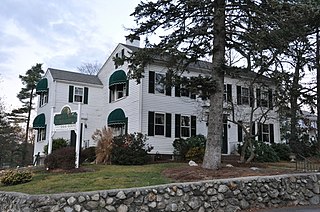
The George Batchelder House is a historic house in Reading, Massachusetts. Built in 1825, it is a prominent local example of Federal period architecture. It was listed on the National Register of Historic Places in 1984. It currently houses professional offices.
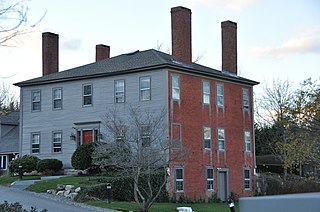
The Thomas Symonds House is a historic house at 320 Haverhill Street in Reading, Massachusetts. Built sometime between 1775 and 1836 by Thomas Symonds, Jr., it is the only Federal period brick-ended house in the town, and is unusually architecturally sophisticated for the period in the town. The house was listed on the National Register of Historic Places in 1984.

The Edward Gardner House is a historic house at Zero Gardner Place in Winchester, Massachusetts. Built about 1764, it is one of the oldest buildings in Winchester, and is also important for its association with the Gardner family, who were early settlers of the area. It was listed on the National Register of Historic Places in 1989.

The Nathaniel Cowdry House is a historic house at 71 Prospect Street in Wakefield, Massachusetts. Built about 1764, it is one of Wakefield's oldest buildings, built by a member of the locally prominent Cowdry family, who were early settlers. The house was listed on the National Register of Historic Places in 1989.
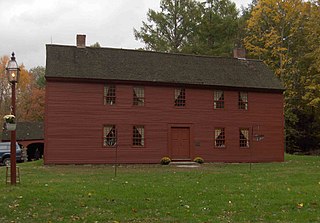
The Strong House, now the Strong-Porter Museum, is a historic house museum at 2382 South Street in Coventry, Connecticut. It is a 2+1⁄2-story wood-frame structure, five bays wide, with a center entry and two interior chimneys. The oldest portion of the house is estimated to date to 1710, early in the period of Coventry's settlement, and retains a significant number of period features. The house was listed on the National Register of Historic Places in 1988. It is now owned and operated by the Coventry Historical Society as a museum. In addition to exhibits in the house about local history, visitors can tour the carpenter shop, 19th century privy, carriage sheds and barn.

The Boynton Street Historic District encompasses three historic Federal-period houses between 13 and 26 Boynton Street in Eastport, Maine. Built between 1810 and 1920, these well-preserved buildings represent the finest concentration of their type in easternmost Maine. They were listed on the National Register of Historic Places in 1984.

The Moody Homestead is a historic house at 100 Ridge Road in York, Maine. The main house, built in 1790, is attached to an ell that is estimated to date to the late 17th century. The house has been owned by descendants of the locally prominent Moody family since the 1770s. It was listed on the National Register of Historic Places in 1975.

The Barnes-Hill House is a historic house at 12 North Brookfield Road in Spencer, Massachusetts. Built about 1800, it is a well-preserved local example of Federal architecture, and was home to figures influential in the development of the Hillsville area where it stands. The house was listed on the National Register of Historic Places in 2016.
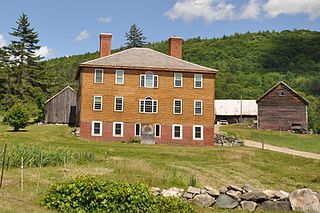
The Jeffrey House is a historic house on North Street in Chester, Vermont. Built in 1797, it is one of Vermont's small number of surviving Georgian style houses. It was built by the son of one of the area's early settlers, and originally served as a tavern. It was listed on the National Register of Historic Places in 1974.























